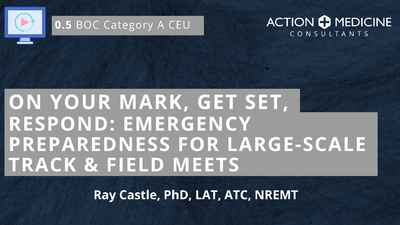General Course Information
Learning Material
31:58
AI Chat Bot
The chat bot may hallucinate. Please double check results.
On Your Mark, Get Set, Respond: Emergency Preparedness for Large-Scale Track & Field Meets › Learning Material
Presentation (Video)
Updated May 30, 2024
Copyright © 2025 Action Medicine Consultants, LLC
___MESSAGE___
___MESSAGE___


